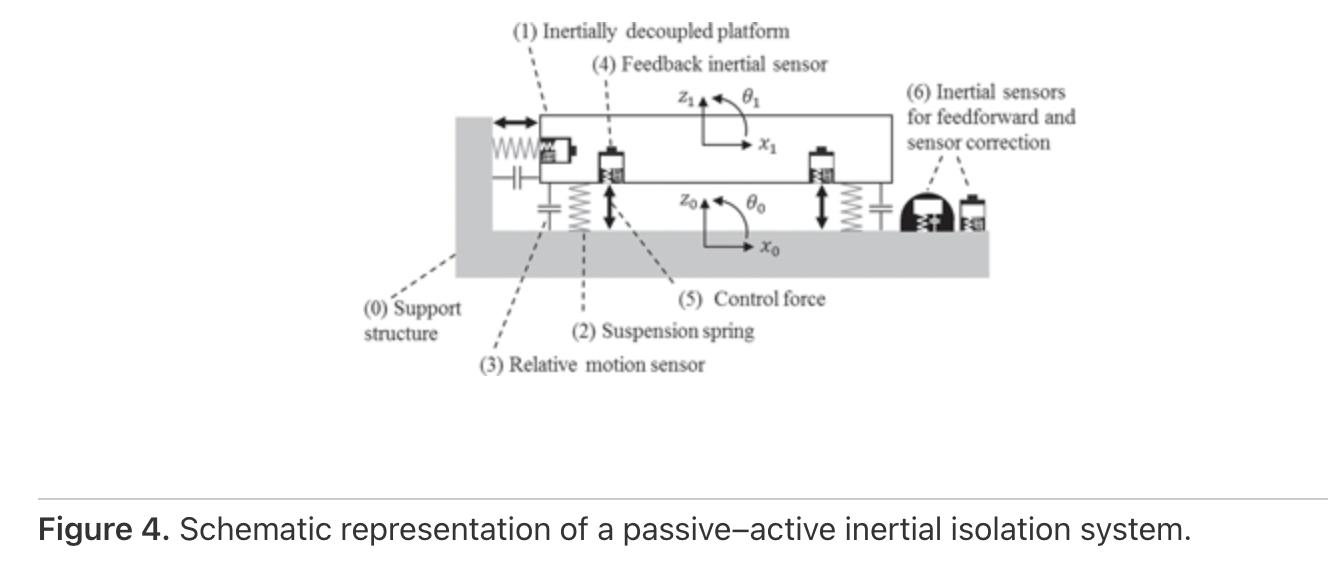¶ Internal Seismic Isolation
The passive isolation systems of LIGO are the organization's last line of defense against unwanted vibrations (aka noise). LIGO's "active" damping system is the first line of defense against vibration. LIGO's quad suspensions are mounted beneath active vibration/seismic isolation systems, providing the quietest possible operating environment.
Internal seismic isolation platforms (ISIs) in these systems use position- and vibration-sensors (like seismometers) calibrated to different frequencies of environmental vibrations, as well as permanent-magnet actuators. These feedback mechanisms work together to counteract ground movements, keeping the interferometer's internal components virtually motion-free. The magnitude of vibrations introduced to the suspensions (at the point of attachment to the ISI) can be reduced to no more than 2x1013 m with this active level of isolation. The suspensions then take over, lowering the noise level roughly a million times more in order to assist LIGO attain its desired detection sensitivity of 1019 m (the amount by which gravity waves stretch and shrink spacetime between the test masses).
Active seismic isolation that is internal to the vacuum system. BSC ISIs have two platforms: stage 1 and stage 2. HAM ISIs have one stage: stage 1. Each ISI stage is mechanically isolated from the previous stage by a set of blade springs, and the resulting resonance is actively damped. Each stage is actively isolated (in addition to damping) from the previous stage. In these ways, LIGO uses both passive and active vibration isolation systems to facilitate its ability to detect gravitational waves.

¶ Channel Name Breakdown:
| Name | Description |
|---|---|
| Channels | |
| ISI | Internal Seismic Isolation |